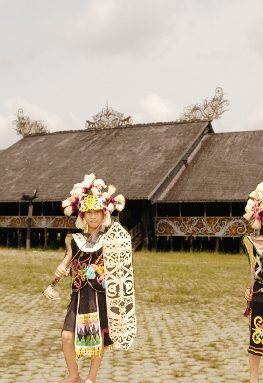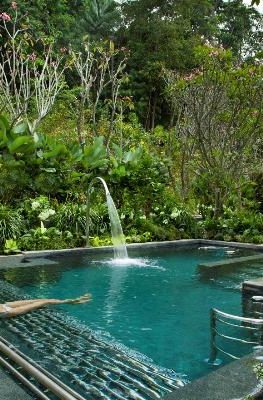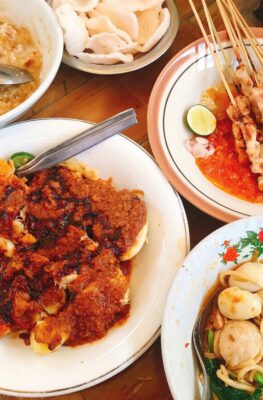Published on June 8, 2018
Rice terraces near Sagada, Philippines. Image © Jojo Nicdao / Creative Commons
Far beyond the well-traveled tourist trails of the lowlands, the mountain towns of Southeast Asia offer a travel experience far more rugged and authentic, though you’ll need to travel much further to get there. The effort is worth it, though, as a closer look at these five top mountain towns can show you.
Sagada in the Philippines: Best of Filipino Highland Culture
The culture of the Ifugao is closely tied with the Philippine highlands’ cloud-draped peaks and valleys. You can see indications of the Ifugao culture almost everywhere in the Mountain Province (worth taking a long road trip for), but it’s in the town of Sagada where it’s most apparent – seen in local museums and handicrafts, and obliquely in the local people’s hanging coffins.
“You can visit museums, watch the craft of traditional weaving and bring home souvenirs such as bags, taste the local cuisine and drinks (Bugnay wine or their own coffee brew), or explore the hanging coffins used by the locals in the old times,” explains Katherine Cortes of Taralets Anywhere (Facebook|Instagram). “You can also go spelunking, swim in waterfalls and trek to rice terraces.
“Lastly, you can simply relax in cosy homestays and enjoy the chill temperature up there in the mountains.”
Doi Mae U-Kho in Mae Hong Son, Thailand. Image courtesy of the Tourism Authority of Thailand.
Mae Hong Son in Thailand: Mountain Adventures Aplenty
The mountainous northern reaches of Thailand have plenty to offer the tourist willing to venture off the beaten track. Mist-shrouded forests, twisting trekking trails, and fascinating waterfalls make an excellent backdrop for adventure; the local hill tribes introduce you to cultural traditions that little resemble the mainstream you’ll find in Bangkok or Phuket.
You’ll probably start your visit in Pai, a backpacker town with all the usual backpacker accoutrements (main street full of bars, restaurants and shops; cheap accommodations; late night partying). From Pai, Mae Hong Son’s natural beauty lies within easy reach.
You can go whitewater rafting during the rainy season from July to November, where the monsoon rains swell the Pai River into a challenging Class V rafting experience. Or you can go mountain biking around parts of the Chiang Mai-Mae Hong Son loop that snakes along the Moei and Pai Rivers.
Or you can do as Monique and Dylan Mac of Honeymoon Backpackers (Instagram|Facebook) did, volunteering in the mountain villages by helping build a mud brick school for refugees. “There’s nothing like giving back to the local community, especially in the country you’re travelling,” Monique explains. “Volunteering is such a fulfilling experience.”
Burial cave in Toraja, Indonesia. Image courtesy of Mike Aquino.
Tana Toraja in Indonesia: Glorious Funerary Culture
The highlands of Sulawesi Island shelter the distinctive Toraja tribespeople, a mountain people whose distance from the capital Makassar have allowed them to retain their singular culture. It takes an eight- to ten-hour ride from the capital to the Tana Toraja heartlands until you reach Rantepao, the gateway to Toraja land.
The Toraja have a unique funerary culture that celebrates both life and death. Visit a traditional village like Pallawa – its main path flanked by tongkonan houses on one side, alang rice granaries on the other – and you’ll see this in action. Buffalo horns serve as status symbols, showing off the remnants of sacrifices made for a dearly departed family member. (You can also visit the Pasar Bolu Market in Rantepao to see locals buying the buffalo for celebrations of their own.)
It’s in areas like Lemo where you can see the culture at its most striking. As the Toraja believe that the road to Paradise is easier for souls whose bodies are interred higher above the ground, the locals bury their dead in niches carved out of the cliff, high above the surrounding rice fields. Tau-tau (effigies of the dead) stand guard outside the tomb.
Muchi Hill Tribe Girls in Phongsaly, Laos. Prince Roy/Creative Commons
Phongsaly, Laos: On the Border of Laos and China
Bordering Vietnam and China, the province of Phongsaly (and its similarly-named main town) stand at about 1,400 meters above sea level, carving out an environment and culture that stands apart from its lowland counterparts.
About 28 different ethnic groups call Phongsaly home, each harboring individual traditions, languages and attire. You’ll see many of these cultures in Phongsaly Town, which bears a distinct Chinese personality (due to the area’s proximity to the Chinese border). The Museum of Ethnic Groups in Phongsaly shows off the handiwork of the different cultures in Phongsaly, though the old quarter’s buildings have a Chinese Yunnanese character.
But you’ll need to go beyond the settled areas to really see Phongsaly at its best. Go trekking down the trails leading from Phongsaly to remote villages and conservation areas. Areas of interest include the Nam Lan Conservation Area and Wat Luang, an ancient Tai Lue-style Buddhist monastery.
Sapa from the air. Viet Nam National Administration of Tourism
Sapa, Vietnam: the Country’s Highest Point
Climb up to northwestern Vietnam to see Sapa’s rice terraces and cloud-covered slopes, best discovered through day hikes and longer treks, some reaching up to Mount Fansipan. Part of the Hoang Lien Mountain Range, Vietnam’s highest peak rises about 3,143 meters above sea level, taking three days to climb.
“The gorgeous mountainous town of Sapa…. is a place where the Black Hmong culture is embraced, and beautiful rice terraces line the hillsides,” explains Backpackers Wanderlust‘s Tasha Amy (Facebook|Twitter|Instagram), who slept at a homestay to get the full Sapa experience, including meals with locals.
“If you do one thing at your homestay make sure you have a family dinner,” says Tasha. “These were some of the best meals I have ever had, and you can even get the recipes since you now know the chef!”






